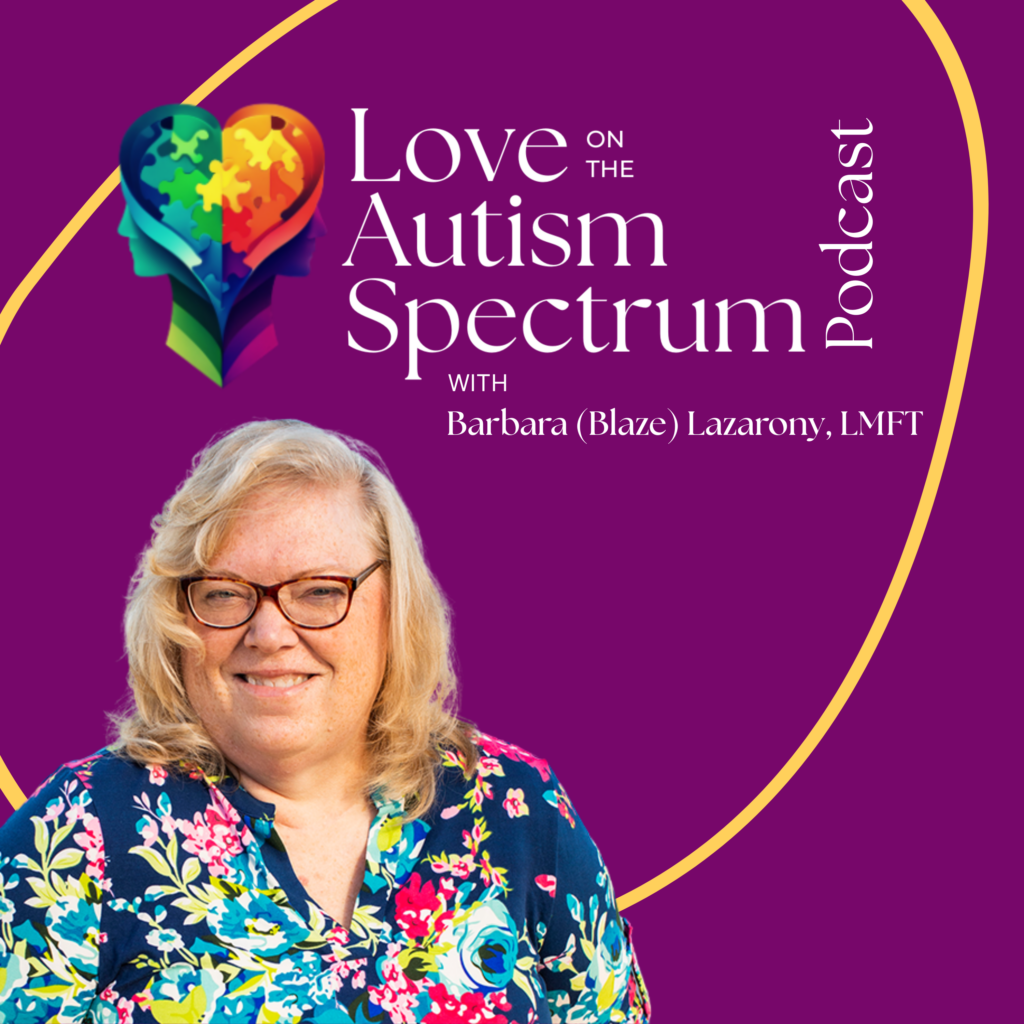Pathological Demand Avoidance (PDA) presents unique challenges for individuals and their families. This intricate condition, marked by extreme avoidance of everyday demands, is considered a profile or subtype within autism spectrum disorder (ASD), sharing characteristics with ASD and presenting diagnostic challenges due to behaviors associated with anxiety and a need for control.
In this blog post, we aim to illuminate pathological demand avoidance autism by examining its key features, its connection to the autism spectrum, and practical strategies for managing it through various life stages. Our objective is to provide a comprehensive understanding that empowers individuals with PDA, their families, and professionals to navigate this journey with confidence and hope while also exploring approaches for treating pathological demand avoidance.
Key Takeaways on Pathological Demand Avoidance Autism
- Pathological Demand Avoidance (PDA) involves an intense evasion of everyday demands, frequently observed in individuals on the autism spectrum. PDA is considered a profile within autism spectrum disorder, characterized by extreme avoidance of demands due to anxiety and a need for control.
- Grasping PDA and its overlap with autistic traits necessitates research to devise effective support strategies.
- Recommended strategies include low demand/low arousal approaches, fostering collaboration and flexibility in educational environments, recognizing signs and symptoms of PDA in young individuals, and offering resources for transitioning into adulthood.
Exploring Pathological Demand Avoidance in the Autism Spectrum
Pathological Demand Avoidance (PDA) is a proposed subtype of autism spectrum disorder (ASD) and a neurodevelopmental condition that has sparked considerable debate and controversy. Although the National Autistic Society does not officially recognize it, PDA is defined by the following characteristics:
- an elevated refusal to comply with requests or expectations
- strenuous efforts to avoid social demands
- limited evidence of a connection to other conditions, such as epilepsy or pervasive developmental disorder.
Understanding the complex nature of PDA and its association with the autism spectrum is essential in crafting effective strategies to support those affected. Research into understanding PDA plays a vital role in this endeavor. Additionally, treating pathological demand avoidance within the context of an autism diagnosis is crucial, emphasizing compassionate approaches and individualized treatment plans.
Defining Pathological Demand Avoidance (PDA)
Pathological Demand Avoidance (PDA) refers to an intense aversion to everyday demands, often seen in those with autism spectrum disorder (ASD). PDA is considered a profile or subtype within ASD, characterized by extreme avoidance of everyday demands due to anxiety and a need for control. Common behaviors linked to PDA include:
- attempts to distract the authority figure who issued the request
- providing excuses
- retreating into fantasy
- avoiding meaningful conversations
- leading to meltdowns or panic attacks, which can impact mental health
The term PDA was introduced by the late Elizabeth Newson, a psychology professor at the University of Nottingham, U.K., in 1983 and is frequently seen in individuals diagnosed with autism. While not yet listed in the Diagnostic and Statistical Manual, PDA is increasingly recognized in psychological circles.
The initial indications of Pathological Demand Avoidance Syndrome in children may include:
- Intense opposition to routine demands
- Evading usual daily demands
- Seeming to be sociable on the exterior but having difficulty with social interactions
- Developing social interaction skills is crucial for these children to better understand social situations and enhance appropriate social behaviors.
- Disrupting functioning at home or school
Diagnosing PDA relies on identifying a pronounced behavioral pattern of resisting perceived demands. This condition is marked by difficulty completing specific tasks at particular times, whether for oneself or others.
The Diagnostic Landscape
The diagnosis of PDA is a topic of debate; some people support recognizing it as an independent diagnosis within developmental disabilities. Conversely, others claim that PDA lacks the precision necessary for clinical utility, suggesting it should not be classified as a subtype of autism spectrum disorder but rather as a general behavioral profile that might correlate with various conditions. Identifying PDA behavior as a “profile” can help tailor responses to a child’s unique needs since children exhibiting PDA symptoms may need different types of support compared to their peers on the autism spectrum.
This ongoing discussion highlights the need for further research to understand PDA as a unique aspect of the autism spectrum. Therefore, it is essential to identify and confront PDA’s specific characteristics challenging behaviors and challenges in different environments, such as educational settings and everyday life, to offer adequate support to individuals impacted.
Every doorway, every intersection has a story. –Katherine Dunn
The Intersection of PDA Traits and Autistic Features
Recognizing PDA traits in contrast to traditional autistic features is essential for grasping the condition and offering suitable support. PDA represents a profile within autism spectrum disorder (ASD) marked by significant resistance and evasion of daily demands. PDA traits differ from typical autistic characteristics in multiple respects:
- Phobias, novelty, and ordinary demands of life trigger avoidant behaviors.
- Educational and management strategies effective for PDA differ significantly from those typically used for autism spectrum disorders.
- PDA individuals are often described as likable, sociable, chatty, creative, charming, and charismatic.
Additionally, PDA incorporates an understanding of pathological demand avoidance through social manipulation, differing from characteristics of autistic spectrum disorders. Understanding the nuanced distinctions between PDA traits and autistic features enables better support and intervention strategies that cater to the specific needs of individuals with PDA. Treating pathological demand avoidance with tailored strategies, such as cognitive-behavioral therapy and positive behavior support, is crucial for reducing anxiety and fostering flexibility in daily challenges.
Differentiating PDA from Other Autism Profiles
Pathological Demand Avoidance (PDA) stands out from other profiles within the autism spectrum disorder (ASD) because of its pronounced avoidance of demands and behaviors primarily driven by anxiety. The fundamental autistic characteristics that set the PDA profile apart from other autism spectrum profiles include:
- Resistance to and avoidance of everyday demands
- An intense need for control
- Mood fluctuations
- Impulsive behavior
Individuals with PDA exhibit a more pronounced and widespread demand avoidance compared to other autism conditions. Specific anxiety-driven behaviors observed in PDA, which are usually absent in other autism profiles, encompass significant avoidance of daily demands, a strong urge for control spurred by anxiety, and variable behaviors. These differences emphasize the necessity of recognizing and responding to the distinctive characteristics of PDA in different situations.
Understanding Anxiety and Control in PDA
Anxiety and control significantly influence the lives of individuals with Pathological Demand Avoidance (PDA), a profile within autism spectrum disorder, often resulting in distinct coping strategies and behaviors. PDA is distinguished by:
- Heightened levels of anxiety, which leads to avoidance of everyday demands
- Control issues in the form of a strong need for control over their environment
- Avoiding or resisting anything that feels like a demand
- Exhibiting behavior that appears obsessive
These control issues can significantly impact their daily life and relationships.
Understanding the connection between anxiety and control in PDA is crucial for offering adequate support and devising successful intervention strategies. By identifying the sources of anxiety and assisting individuals with PDA in developing coping techniques to handle their intense need for control, we can enhance their overall quality of life and their capacity to face daily challenges.
Navigating Daily Life with PDA
Individuals with PDA and their families frequently encounter difficulties in managing daily life due to the pronounced demand avoidance and need for control, which are often seen in profiles within autism spectrum disorder. However, utilizing various strategies and resources can mitigate some of these challenges, fostering a more supportive environment. Employing self-help coping techniques, engaging in therapies, implementing life hacks, and developing personal coping skills are all effective ways to manage PDA in everyday life. Moreover, the PDA Society plays a crucial role in supporting those with PDA by offering valuable strategies, promoting person-centered relationships based on trust and flexibility, and working closely with individuals and families.
Developing social interaction skills is also crucial in managing PDA. Techniques like Social Stories and Visual Supports can help individuals understand social situations and enhance appropriate social behaviors, helping them develop stronger social interaction skills. Additionally, assessments from speech and language therapists can tailor interventions to improve communication and social skills.
Understanding PDA and its distinct characteristics is essential for managing everyday conditions. By using customized strategies, enhancing the environment, and creating a supportive atmosphere, those with PDA can more effectively navigate daily challenges, leading to increased autonomy and personal development.
Strategies to Mitigate Extreme Demand Avoidance
There are numerous strategies to help alleviate extreme demand avoidance in individuals with PDA, a profile within autism spectrum disorder. Approaches focusing on low demand and low arousal are designed to minimize stress and anxiety by promoting flexibility and fostering collaboration and trust. These methods can be instrumental in reducing anxiety levels in children and establishing a stable and supportive environment.
Other strategies to address extreme demand avoidance include marked demand avoidance techniques such as rational demand avoidance and:
- Being flexible in expectations to avoid demands
- Building strong relationships
- Planning ahead
- Offering choices
- Using visual supports
- Providing a calm environment
- Implementing innovative approaches, such as using an extreme demand avoidance questionnaire to gain deeper insights into the individual’s needs and preferences
Recognizing the distinct needs of individuals with PDAs and customizing approaches to their particular challenges can help cultivate a more nurturing environment conducive to personal growth and development.
Role of the PDA Society in Support and Advocacy
The PDA Society offers invaluable resources, guidance, and advocacy for individuals with Pathological Demand Avoidance (PDA), a profile within autism spectrum disorder, and their families. They provide support groups, training for parents and professionals, and various resources for individuals and parents. The Society also leads advocacy campaigns and initiatives in multiple areas, such as conducting research, providing training for mental health professionals, advocating for workplace adjustments, offering volunteer opportunities, and supplying expertise and resources.
The PDA Society significantly enhances the lives of individuals with PDA and their families by promoting understanding and support. Through its resources and advocacy, the society connects those with PDA to the necessary support systems for their development and success.
Therapeutic Approaches
Therapeutic approaches for Pathological Demand Avoidance (PDA), a profile within autism spectrum disorder, focus on reducing anxiety and fostering flexibility in managing demands. A multidimensional treatment plan that addresses various aspects of the condition is essential. This includes behavioral strategies, communication and social interaction techniques, sensory processing and regulation strategies, and emotional and mental health support.
Cognitive-behavioral therapy (CBT) is a commonly used approach that helps individuals recognize and reframe negative thought patterns and behaviors. By promoting healthier coping mechanisms and emotional regulation, CBT can significantly improve the quality of life for those with PDA. Positive Behavior Support (PBS) is another practical approach that emphasizes creating supportive environments, teaching new skills, and utilizing reinforcement techniques to encourage positive behaviors.
By combining these therapeutic approaches, individuals with PDA can develop better coping strategies, improve their emotional regulation, and navigate everyday demands more effectively.
Role of a Speech and Language Therapist
A Speech and Language Therapist (SLT) plays a crucial role in the treatment of individuals with Pathological Demand Avoidance (PDA), a profile within autism spectrum disorder (ASD). SLTs aim to improve communication skills, both verbal and non-verbal, which are often challenging for those with PDA. During SLT sessions, therapists conduct assessments to identify specific communication challenges and develop personalized goals tailored to the individual’s needs.
Therapists use various techniques and strategies to enhance communication, such as improving speech clarity, expanding vocabulary, and developing social communication skills. Additionally, SLTs may do occupational therapy to incorporate alternative communication methods, such as visual supports or augmentative and alternative communication (AAC) devices, to facilitate better interaction and understanding.
By addressing communication challenges, SLTs help individuals with PDA improve their social and verbal communication and skills, leading to more effective interactions and a better quality of life.
Sensory Regulation Strategies
Sensory regulation strategies are essential for individuals with Pathological Demand Avoidance (PDA), a profile within autism spectrum disorder, who often experience sensory overload. Sensory diets and environmental modifications are commonly used strategies to help manage sensory input and create a more calming environment.
A sensory diet is a carefully planned and personalized schedule of sensory activities designed to help individuals with PDA regulate their sensory input. These activities can include deep pressure exercises, movement breaks, and calming activities tailored to the individual’s sensory needs.
Environmental modifications involve making changes to the physical environment to reduce sensory triggers and create a more predictable space. Common modifications include reducing noise levels, minimizing visual stimuli, providing a quiet space, and using weighted blankets or vests to offer a sense of security and calm.
By implementing these sensory regulation strategies, individuals with PDA can better manage sensory overload, leading to improved emotional regulation and overall well-being.
Addressing PDA in Educational Settings
Tackling PDAs in educational environments is crucial since it affects the overall learning experience and well-being of students with PDAs. By adopting collaborative learning strategies and emphasizing flexibility, educators can more effectively support these students and enable them to reach their full potential. Understanding the specific needs and challenges of students with PDA, a profile within autism spectrum disorder, is vital for fostering an inclusive and supportive educational atmosphere. Treating pathological demand avoidance with tailored educational strategies is essential to address the unique needs of these students.
Alongside collaboration and flexibility, educators can gain from comprehending PDA behaviors and adjusting their teaching approaches and classroom tactics accordingly. By utilizing effective educational strategies that cater to the needs of students with PDA, a more supportive and inclusive learning atmosphere can be cultivated, fostering academic achievement.
Collaborative Approaches to Learning
Working together in learning can lessen anxiety and avoidance in children with Pathological Demand Avoidance (PDA), a profile within autism spectrum disorder. Effective collaborative strategies for these children include:
- Comprehending behaviors and altering one’s perspective
- Optimizing the learning setting
- Reducing requirements and furnishing assistance
- Utilizing visual aids and structured routines
- Integrating interests and strengths into learning activities
These strategies can be beneficial for creating a supportive and inclusive learning environment for children with PDAs.
Teachers may implement collaborative learning strategies in a classroom setting with a PDA student by:
- Providing succinct and organized instructions
- Proffering choices and elasticity
- Forming a supportive and all-inclusive atmosphere
- Utilizing visual aids
- Furnishing individualized assistance
These strategies can foster a supportive and inclusive learning environment for students with Pathological Demand Avoidance.
The Importance of Flexibility and Adaptation
Flexibility and adaptability are vital for assisting students with Pathological Demand Avoidance (PDA), a profile within autism spectrum disorder, in educational environments. Achieving a balance between leniency and expectations, tailoring education, and addressing individual needs is critical in responding to these students’ distinct challenges. This strategy enables students to handle their conditions better, significantly improving their learning experience.
Examples of flexibility and adaptation strategies for students with PDA include:
- Being accommodating and amenable in approaches to tasks and activities
- Utilizing oblique language and offering choices to reduce demands
- Anticipating and providing hints instead of direct instruction
- Incorporating puppets or toys to bolster involvement and communication
- Utilizing the PDA PANDA support strategies, which include choosing battles wisely, managing anxiety, fostering discussion and collaboration, and masking and managing demands
These strategies contribute to creating a more supportive and inclusive learning environment.
PDA Through Different Developmental Stages
Examining PDA at various developmental stages within the context of autism spectrum disorder is essential for offering appropriate support and intervention strategies. By identifying PDA in young individuals and facilitating their transition into adulthood, comprehending the unique characteristics and challenges of PDA throughout different life stages can significantly enhance the overall well-being and success of those affected by the condition. Developing social interaction skills at different developmental stages is also crucial for improving communication and social behaviors.
Intense fears and the need for personal autonomy are recurring themes when discussing PDA at different developmental stages. Recognizing these elements allows individuals with PDA, their families, and professionals to tackle the related challenges effectively and apply strategies that foster growth and development. Grasping PDA’s distinctive characteristics and hurdles is vital for delivering appropriate support and therapeutic interventions tailored to each individual’s requirements.
Recognizing PDA in Young People
Recognizing PDA in young individuals, a profile within autism spectrum disorder, is essential for ensuring they receive the support and intervention they need as soon as possible. PDA is marked by:
- Extreme resistance to ordinary demands
- High levels of anxiety
- Social difficulties
- Play based on observation
- Avoidance of structure and routine
Recognizing these distinct traits in young individuals can enhance comprehension of PDA and develop more customized support approaches.
Recognizing the early signs and symptoms of PDA in children enables parents and professionals to cultivate a supportive environment that promotes personal growth and development. By identifying PDA in young people and applying customized support strategies, families and caregivers can more effectively manage emerging challenges and encourage a more prosperous and fulfilling life for affected individuals.
Supporting Transition to Adult Life
Moving into adult life with a PDA, a profile within autism spectrum disorder, necessitates continuous support and resources for a successful and satisfying existence. Adults with PDA face specific challenges, including:
- Compulsively avoiding routine demands
- Drastic emotional fluctuation
- Intense apprehension
- The necessity to maintain personal independence
Through resources, guidance sensory support, and advocacy, support systems can facilitate the transition to adult life, addressing the distinct challenges adults encounter with PDA.
There is a wide range of resources available for adults with PDA, including self-help strategies, therapies tailored explicitly for adults with PDA, and the guidance and support provided by the PDA Society. By leveraging these resources and continuously developing personal coping skills, adults with PDA can more effectively manage their condition, achieving greater independence and personal growth throughout their lives.
Building Personal Autonomy
Building personal autonomy in individuals with Pathological Demand Avoidance (PDA), a profile within autism spectrum disorder, entails nurturing enduring coping skills, promoting decision-making abilities, and applauding accomplishments. Encouraging self-help tools and coping strategies can enhance a child’s independence as they grow older.
Fostering a sense of control and agency is crucial for individuals with PDA. By providing opportunities for decision-making and celebrating their achievements, we can help them develop the skills and confidence needed to navigate everyday demands and challenges. This approach enhances their independence and contributes to their overall personal growth and development.
Emotional and Mental Health Support
Individuals with Pathological Demand Avoidance (PDA), a profile within autism spectrum disorder, often face challenges related to emotional and mental well-being. Providing appropriate support in managing anxiety and emotions is crucial for their overall development and quality of life.
Anxiety management techniques can help individuals cope with and reduce their anxiety levels. These techniques may include mindfulness practices, relaxation exercises, and structured routines to provide a sense of predictability and control underlying anxiety more. Emotional regulation strategies, such as identifying and labeling emotions, recognizing triggers, developing coping skills, and practicing self-compassion, can support their emotional well-being.
By implementing these strategies and providing appropriate support, we can help individuals with PDA manage their emotional and mental health concerns, leading to a more fulfilling and balanced life.
Multidisciplinary Approach to PDA Treatment
A multidisciplinary approach to treating Pathological Demand Avoidance (PDA) is essential for addressing the complex needs of individuals with this profile. This approach involves collaboration between various professionals, including psychologists, speech and language therapists, occupational therapists, and educators. By working together, these professionals can develop a comprehensive treatment plan that addresses the individual’s unique needs and goals.
Psychological interventions, such as cognitive-behavioral therapy (CBT) and acceptance and commitment therapy (ACT), play a crucial role in addressing anxiety, emotional regulation, and coping strategies. These therapies help individuals with PDA understand and manage their emotions, reducing the impact of demand avoidance on their daily lives.
Speech and language therapy is another vital component, focusing on improving communication skills, both verbal and non-verbal. Speech and language therapists work with individuals to enhance their ability to express themselves and understand others, which can significantly reduce frustration and anxiety associated with communication challenges.
Occupational therapy addresses sensory sensitivities and sensory regulation, helping individuals with PDA manage sensory overload and develop daily living skills. Occupational therapists create personalized sensory diets and recommend environmental modifications to create a more calming and predictable environment.
Educational interventions, such as individualized education plans (IEPs), are tailored to meet the academic and social needs of students with PDA. Educators work closely with other professionals to implement strategies that support learning and social interaction in a flexible and accommodating manner.
Family therapy is also an essential part of a multidisciplinary approach, providing support and guidance to family members and caregivers. Understanding PDA behaviors and learning effective management strategies can significantly improve the family dynamic and overall quality of life for individuals with PDA.
By taking a multidisciplinary approach to PDA treatment, individuals with PDA can receive comprehensive support and guidance to help them manage their symptoms and improve their overall quality of life.
Behavioral Strategies for PDA
Behavioral strategies are crucial in managing Pathological Demand Avoidance (PDA) behaviors. These strategies aim to reduce anxiety, improve emotional regulation, and increase flexibility in responding to demands.
Positive Behavior Support
Positive Behavior Support (PBS) is a behavioral approach that focuses on understanding the underlying reasons for challenging behaviors and implementing strategies to promote positive behavior change. PBS involves identifying the triggers and functions of difficult behaviors, developing a behavior support plan that addresses the individual’s needs and goals, and implementing strategies to reduce challenging behaviors, such as redirection, reinforcement, and problem-solving. Regular evaluation of the behavior support plan ensures its effectiveness and allows for necessary adjustments.
PBS is a collaborative approach that involves working with the individual, their family, and other support staff to develop a comprehensive behavior support plan. Using PBS, individuals with PDA can learn new skills, reduce challenging behaviors, and improve their overall quality of life.
In addition to PBS, other behavioral strategies that may be effective in managing PDA behaviors include cognitive-behavioral therapy (CBT) to address anxiety and emotional regulation, acceptance and commitment therapy (ACT) to increase flexibility and values-based action, mindfulness-based interventions to reduce stress and improve emotional regulation, and sensory integration therapy to address sensory sensitivities and regulation.
By combining these behavioral strategies, individuals with PDA can develop the skills and strategies they need to manage their symptoms and improve their overall quality of life.
Summary
In summary, gaining a deep understanding of Pathological Demand Avoidance (PDA) and its distinct characteristics within the context of autism spectrum disorder (ASD) is crucial for offering practical support and intervention strategies to individuals with the condition and their families. By delving into the diagnostic landscape, examining its connection with the autism spectrum, and addressing the role play PDA in daily life and educational settings, this comprehensive overview equips individuals, families, and professionals with the necessary knowledge and resources to better support those affected by PDA. Recognizing PDA’s unique challenges and implementing tailored strategies across various life stages can foster personal growth and development, ultimately enhancing the quality of life for those living with PDA.
Frequently Asked Questions
Does bad parenting cause PDA?
Autism spectrum disorder (ASD) is a multifaceted neurodevelopmental condition, and Pathological Demand Avoidance (PDA) is considered a profile within ASD that exhibits extreme avoidance of everyday demands. PDA is influenced by both genetic and environmental factors rather than poor traditional parenting approaches. Practical parenting approaches should focus on understanding and addressing the child’s needs.
What does a PDA look like in a child?
Children with PDA, a profile within autism spectrum disorder, often engage in socially strategic behaviors to avoid demands. These may include making excuses, diverting attention, procrastinating, issuing threats, or feigning physical inability.
What is pathological demand avoidance autism?
Pathological Demand Avoidance (PDA) is a profile within autism spectrum disorder characterized by an intense avoidance of perceived demands. It is predominantly seen in individuals on the autism spectrum and is marked by extreme behaviors aimed at evading demands.
What are the symptoms of PDA and autism?
Individuals with PDA and autism, a profile within autism spectrum disorder, often struggle to follow instructions, regulate emotions, and engage in social interactions. They may experience heightened anxiety, exhibit sensory sensitivities, and face challenges in using language appropriately. Additionally, they might display behaviors that are considered challenging.









